What’s the most important info to put on a dog’s ID tag?
Let me know what you think.
My pets’ tags are simple. Their tags include their names and two phone numbers (my cell and my husband’s cell).
But is that the best info?
Obviously the more info you can put on the tags, the better.
One of my readers really impressed me when she said she fit the following on one nameplate:
- dog’s name & “chipped”
- phone number
- license number
- rabies tag number
That’s a lot of important info crammed onto one little name plate!
It got me thinking … am I including enough info on my pets’ tags?!
This post is sponsored by dogIDs.
Important info to put on a dog’s ID tag
dogIDs is a business that sells personalized dog collars and ID tags. I asked the company if there is any additional info pet owners should include on the tags beyond the basic name, phone number and perhaps address. Here were some suggestions:
1. Medical needs
One idea the company suggested is to specify on the tag if your dog has any major medical issues.
For example, maybe your dog needs medication such as insulin and someone who finds your dog would have no way of knowing this otherwise.
2. Phone number on the actual collar
Another suggestion from dogIDs is to put your dog’s phone number right on the actual collar like we’ve done with Remy (below). This can be through embroidery or with a nameplate. Either way, your dog carries your number even if he loses his tag.
And obviously, make sure the number is current and working.
One of the most commonly encountered issues with lost pets is if they’re wearing tags at all, the info is sometimes out of date, according to Aurora Piacentino, senior manager of shelter operations for Animal Care Centers of New York City.
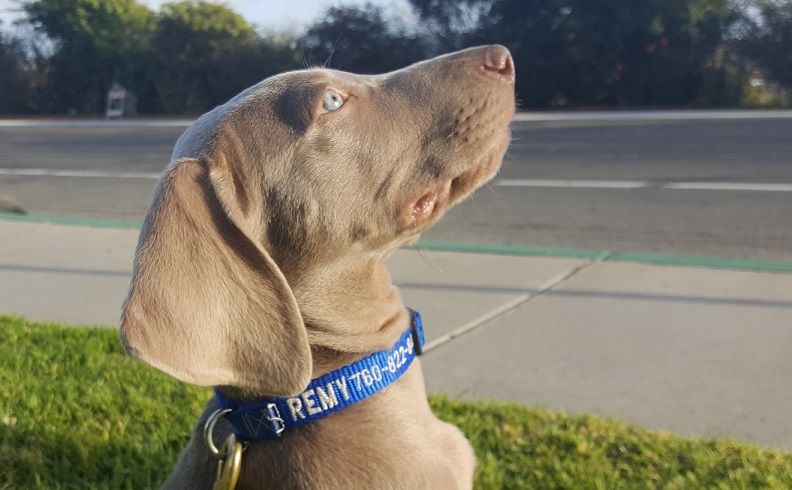
3. Your last name and zip code
The pet owner’s name and general vicinity like “Manhattan” or a zip code is also helpful, according to Piacentino. While the pet’s name is a nice touch, lost animals are likely to be stressed and overwhelmed, so it’s not essential.
When you adopt a puppy—or especially an adult dog—make sure the dog has an ID tag right away, before you even leave the shelter or rescue group. At the very least, he should have a tag with the rescue group’s contact information.
I volunteer with a Labrador rescue and, sadly, at least once a year a newly adopted dog gets away from his new family the first day home. An ID tag is a lifesaver in these situations.
An example: Edward the Yorkshire terrier
Sarah Angst is a blogger who writes about Yorkshire terriers, and she told me about a similar experience with one of her foster dogs.
The Yorkie, Edward (pictured with his new mom), had just gotten adopted and his new family hadn’t gotten him a new collar yet. He was riding in the car while the family dropped the kids off at school, and he managed to escape during the commotion.
“He was roaming the streets for two days in the rain,” Angst said. “We spent countless hours and a sleepless night looking everywhere, posting on Facebook, talking to shelters and vets and putting up flyers.”
Thankfully, Edward was still wearing his old collar and tags Angst had gotten him, and she received a phone call that someone had found Edward.
Angst is a firm believer in microchips but without a collar and tag she said a regular person who finds your pet will have no way to contact you.
Piacentino made the same point:
“Anyone can see a tag and call a phone number—there’s no need to call a central database to access owner information; no need to visit a vet or shelter to scan for a microchip.”
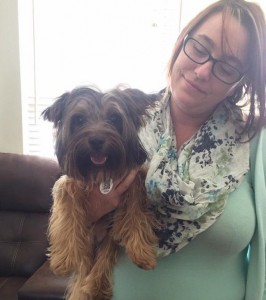
After the experience with Edward, Angst recommends that pet owners:
- Make sure to have recent photos of their pets for posting on Facebook and fliers
- Always keep a collar and tag on their pets.
Angst said in the past she would sometimes wait a few days before putting a dog’s collar back on after a bath. That changed after her experience with Edward.
“Make the collar a priority,” she said.
Giveaway – Win a paw print ID tag for your pet
*This giveaway has ended.
dogIDs is giving away a FREE paw print ID tag to one lucky reader of That Mutt.
To enter:
Just leave a comment below. Let me know which one of your pets could use a new tag.
The tag includes the pet’s name on the front and up to 4 lines of information on the back.
I’ll choose the winner at random on Wednesday May 18. Must have a U.S. mailing address to win.
(Available sizes are 1” diameter and 1 1/4“ diameter.)
Which one of your pets could use an updated ID tag?
Let me know in the comments!
*You can also use coupon code THATMUTT at checkout to save 10% on all products from dogIDs.
Related posts:
How dog ID tags can save a pet’s life – 3 examples (dogIDs blog)
The best waterproof dog collars
Yorkie Splash & Shine (Sarah Angst’s blog)

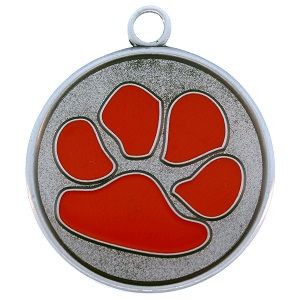
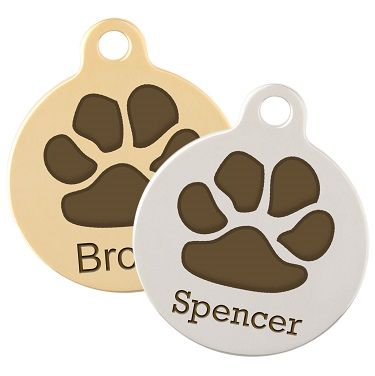
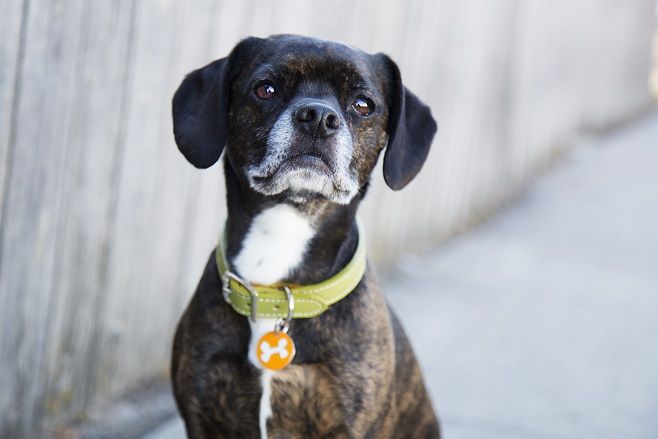
Sandy Weinstein
Sunday 15th of May 2016
all of my girls could use tags. however, they dont wear colars at home. they only wear tags and collars when we go out somewhere. i would like one for my oldest that says she is deaf, has dementia, etc. plus name, address, tn, etc. my girls wear harnesses, however, i do carry their collars with use when we go somewhere, i need to figure out now to put their tags on their harnesses. my oldest is microchipped but the 2 younger ones are not. the dog breeder/handler/show was against them. apparently one of her dogs that she sold to someone, got a microchip, it migrated and killed the dog. i also need to change the vet infor on my tags, since i no longer go to that vet.
Cat
Sunday 15th of May 2016
Pup’s current tag is hanging by a thread of metal, it’s going to wear through any second now. Not overly worried about her going a few days without it because she still has the county license tag and the microchip ID tag but a fancy new tag would look “Grrrand” as Jock the Scottie Dog would say.
Rachelle
Sunday 15th of May 2016
I put "I'm lost, call Rachelle" and my phone number on the tag. An email address might also be useful. I'm not sure about writing "Reward for return." It could help but I'm afraid that some people might steal a dog just to get the reward. It might be a good idea to have two tags--one with "Reward for return" to use while traveling, and one without the phrase "Reward for Return" for daily use.
I would not put a telephone number boldly on a dog collar, because when you are walking your dog, your number might be spotted by the wrong person--I'm not comfortable with having my phone number given out too freely. My dog always wears her tags when she is out. When I had a cat, she always had a collar on, complete with tags because I was afraid that she'd get lost if she ever slipped outside (even though she was an indoor cat) or while I was traveling with her.
Barbara Rivers
Sunday 15th of May 2016
Missy & Buzz always wear their tags - you just never know what might happen, and if they got away for whatever reason it would be so much harder to be reunited with them if they didn't wear them. They have their names and my phone number on them (my husband is out of the country on a more or less regular basis, so his number wouldn't be very helpful). I do like the idea of the name and number embroidered on the collar.
Andrea Dixon
Saturday 14th of May 2016
We have collars w/plates on them for our dogs & on it... Our last name, city & state & our 2 cell #'s. I also have a home again tag hanging on one of their collar's. I like added "chipped". W/5 dogs, a new tag for 1 would push me to go ahead & buy new for the rest!